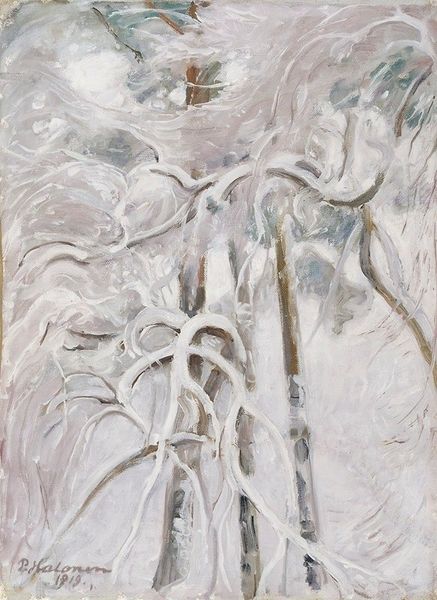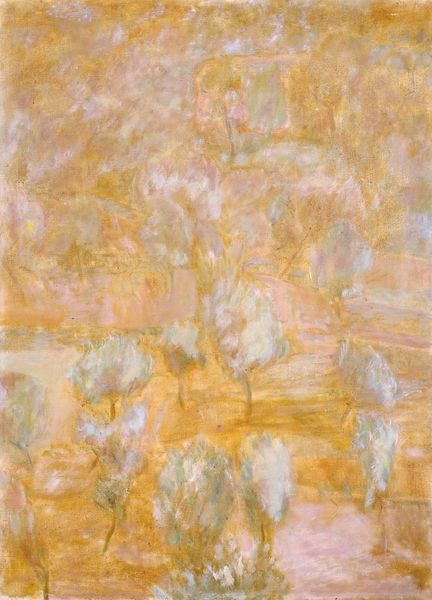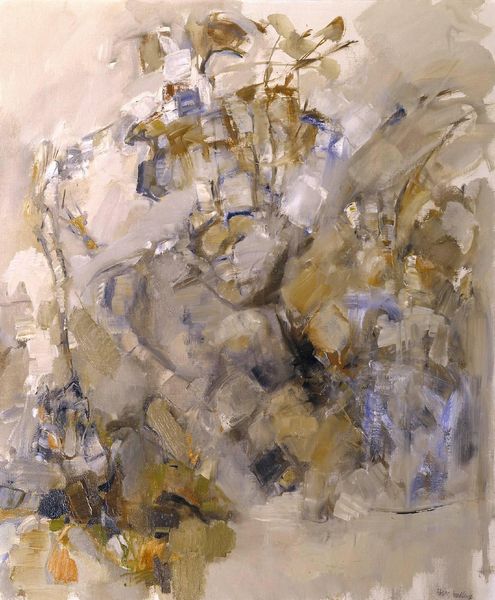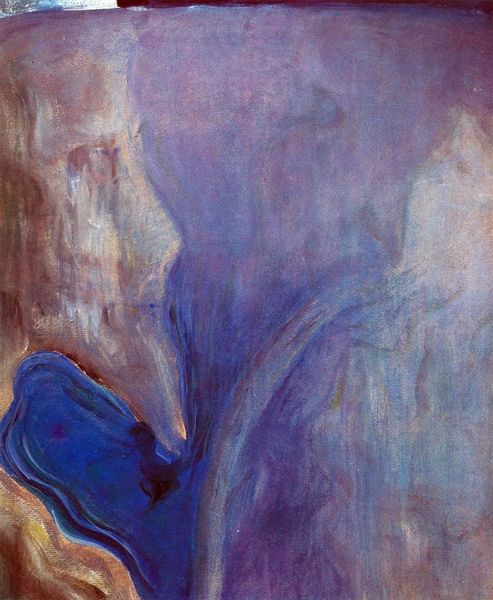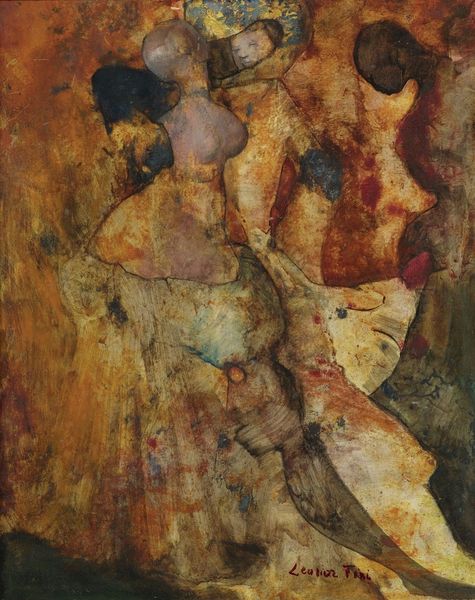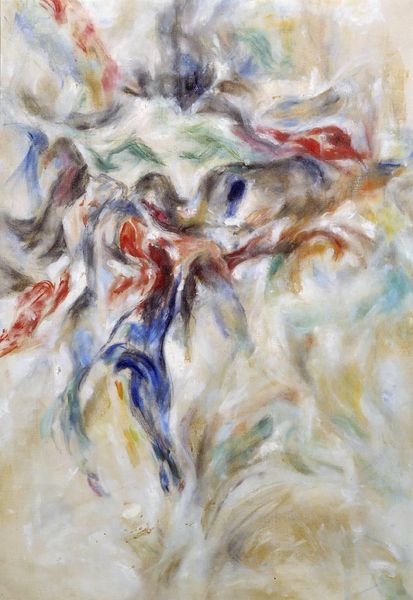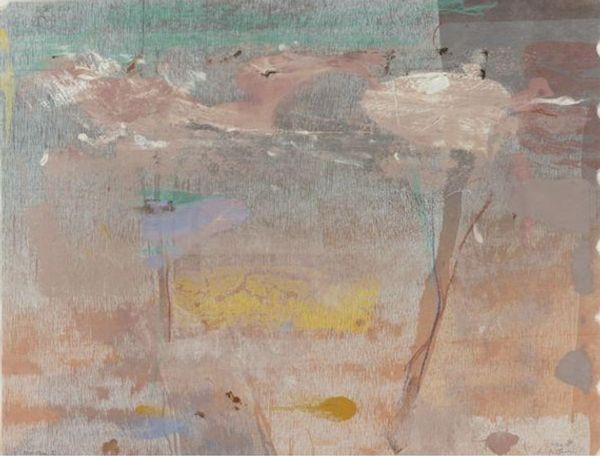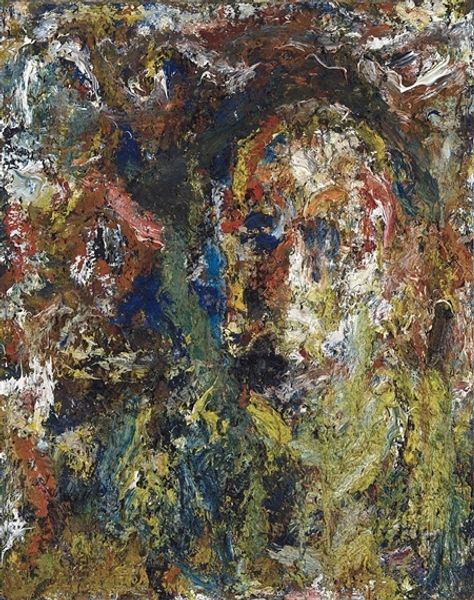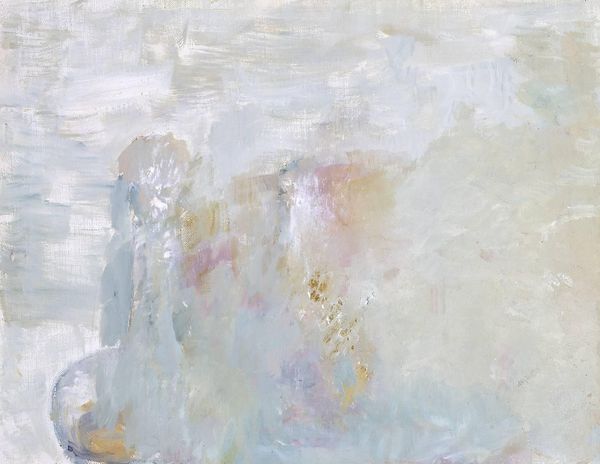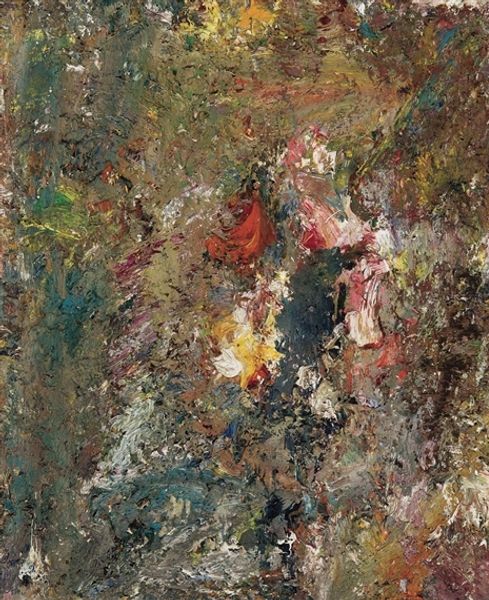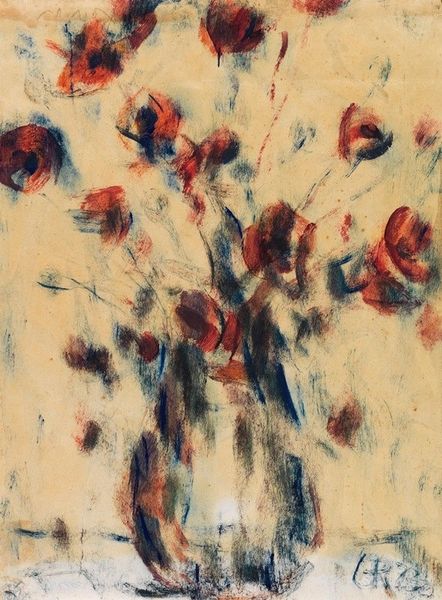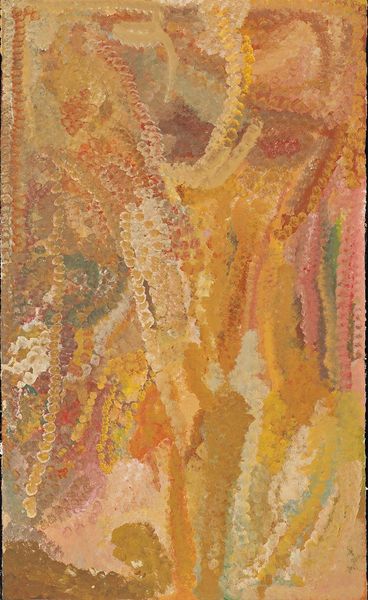
Dimensions: support: 457 x 356 mm frame: 555 x 454 x 75 mm
Copyright: © The estate of Rodrigo Moynihan | CC-BY-NC-ND 4.0 DEED, Photo: Tate
Editor: Here we have Rodrigo Moynihan’s "Objective Abstraction," date unknown, from the Tate collection. It’s a lovely, muted piece. It feels very dreamlike to me, ephemeral even. What do you see in this piece? Curator: Oh, I love that description! "Dreamlike" perfectly captures its essence. For me, it’s like looking into a memory, a half-remembered scene. Do you notice how the colors almost blend into one another, creating a sense of… fleetingness? It feels both fragile and powerful. Editor: Yes, now that you mention it, I can see that. It’s like he's trying to capture something that is constantly shifting. I’m intrigued by the title, though: "Objective Abstraction." Is that an oxymoron? Curator: Aha! Exactly. Perhaps Moynihan is suggesting that even in abstraction, there's an attempt to grasp at something real, something objective. It's the paradox of trying to paint pure feeling, isn't it? Editor: I think I understand. Thanks for pointing that out. I’ll definitely be thinking about this piece differently now.
Comments
tate 8 months ago
⋮
http://www.tate.org.uk/art/artworks/moynihan-objective-abstraction-t00172
Join the conversation
Join millions of artists and users on Artera today and experience the ultimate creative platform.
tate 8 months ago
⋮
Between 1933 and 1936 several artists later associated with the Euston Road School produced almost or totally abstract paintings executed in a free painterly manner. Along with Tibble and Graham Bell, Moynihan produced the most abstract of these. This example is from Objective Abstraction's middle phase, when definite marks and longer strokes had given way to denser textures. In his words: 'the gradual thickening of the paint was ... a kind of build-up as a result of correction and suggestion'. He was 'continually aware of the lung movement of paint, its ability to breathe and move upon the surface of the canvas'. Gallery label, August 2004

